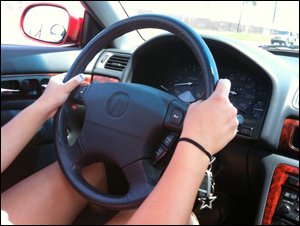 If you are teaching your teen to drive, you need all the help you can get. Many people throw their hands in the air and just send their kids to driving school or hire a driving instructor, but if you are intent upon teaching your teen yourself here are a few tips on driving that should help you out:
If you are teaching your teen to drive, you need all the help you can get. Many people throw their hands in the air and just send their kids to driving school or hire a driving instructor, but if you are intent upon teaching your teen yourself here are a few tips on driving that should help you out:
Learning how to drive can be divided into five stages. The first stage does not actually involve driving itself. You need to teach your teen about cars in general. Even though your teenager has been sitting in cars and watching others drive for the last sixteen years or so, they probably have little to no idea about how to actually work the car. For example, when some teens first get into the car they use both feet to pump the gas and brake pedals instead of just using one and alternating.
Teach your teen how to turn on the car, which can actually be trickier than it looks if the key or wheel tends to get stuck often. Make sure your teen knows the difference between low beam headlights and high beam and when you should use which kind. Tell him/her about all the different lights and buttons on the dashboard and what they mean, what a speedometer is and when it’s time to fill the car with gas. Demonstrate how to fuel a car, check the oil, inflate the tires and change them when the need arises.
Once your student driver is comfortable with the car it’s time to get started with the actual driving. The best place to start practicing basic skills is in an empty parking lot. Basic maneuvers your teen needs to master before heading onto a real road are making right and left turns, stopping and backing up. They should demonstrate awareness of their surroundings and know how to use their mirrors.
Stage three can be a pretty scary stage for both parents and teens – now it’s time to get your kid on the road. Start out on a quiet residential street and work your way up to a busy multilane intersection. This stage of driving will be complete once he/she knows how to make it through an intersection, knows about all the different kinds of stops, can change lanes smoothly, learns not to tailgate or speed, and checks for blind spots.
Once teens have gotten turning right and left it’s time for more sophisticated turns like U-turns and three-point turns. This is also the time to teach how to park a car in a variety of different spots. Teens should exit this stage knowing how to parallel park, park facing uphill or downhill, park in a 90 degree parking spot and park in a diagonal parking spot.
The last stage of driving instruction involves advanced driving skills. Only after your teen has accomplished all the above mentioned skills and maneuvers should they attempt to do things like driving on the freeway or in bad weather like snow or rain. It’s also a good idea to teach your teen how to drive in the daylight at first, and teach them to drive at night only after they have have mastered the basics.
About the author: Dave Sharpe is a writer for the website Carrentalexpress.com.
Credits: Photo courtesy of David Reber.